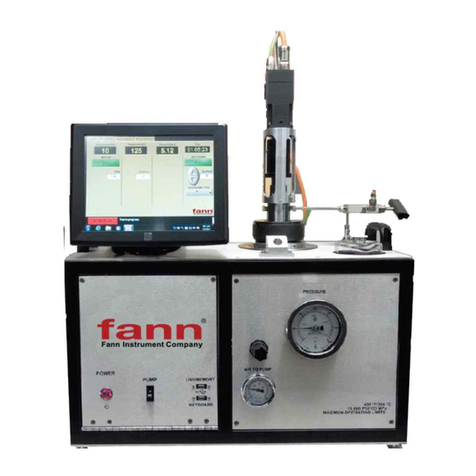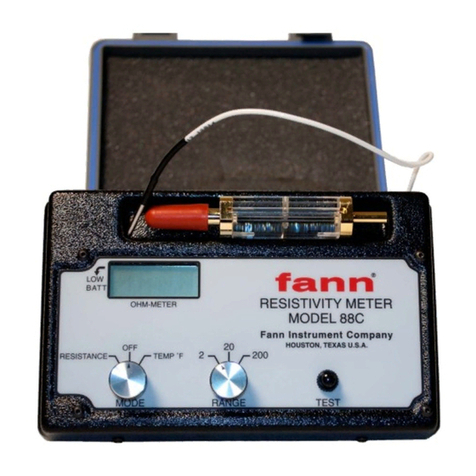
Model 422 & Model 422CC Instruction Manual
D01187869 Revision A, December 2015 6
1 Introduction
Cements are a critical element in the drilling, completion, work over, and
abandonment of wells. For each application, cement slurry is designed with specific
properties and is given additives that provide predictable slurry density, volume,
viscosity, compressive strength, fluid loss, gas migration, and thickening time.
Slurry thickening time, or the time a slurry remains pumpable in a well, is one of
the most critical properties in designing cement slurry. A predictable thickening
time is desired, while maintaining the other specific properties of the cement slurry.
The thickening time can be measured in a laboratory by testing a sample of the
cement slurry in a pressurized consistometer. The elapsed time between initial
application of pressure and temperature on the slurry sample and occurrence of a
predetermined value of consistency (usually 100 Bearden Units, Bc) is the
thickening time for the sample at the particular specification test schedule.
The Model 422 (single cell) and 422CC (dual cell) automatic pressurized
consistometers are able to test cement slurries at temperatures up to 400°F/204°C
and 22,000 psig/151 MPa. The consistometer slurry cup assembly 02-0030 uses a
rotating, cylindrical slurry cup and a stationary paddle assembly enclosed in a
pressure vessel. Pressure is applied to the vessel using mineral oil and an air driven
hydraulic pump. A tubular heater surrounding the slurry cup supplies heat to the
pressure chamber. A centerline thermocouple is provided for determining the
temperature of the cement slurry.
The slurry cup is rotated through the use of an electric motor and a magnetic drive
unit. The rotational speed of the slurry cup is variable between 25 and 250 rpm to
allow the user to study slurries at speeds other than the API prescribed speed of 150
rpm.
The consistency of the cement slurry is measured through a potentiometer
mechanism commonly referred to as a ‘pot mech’. The potentiometer is coupled
with a torsion spring to resist the rotating force of the paddle. The rotational force
is proportional to the consistency of the cement slurry and is measured through the
potentiometer resistor as the spring deflects under load. The consistency is
displayed on the plot generated by the data acquisition system. The consistency
values are recorded in Bearded Units of consistency (Bc).
The consistometer is equipped with two devices for post-test cooling of the
instrument. The first is an external-cooling coil attached to the pressure vessel.
After completion of the test, cooling water may be circulated through this coil to
cool the pressure vessel. The instrument is also equipped with an oil reservoir
cooling coil to independently cool the oil after a test.
Fann pressurized consistometers are equipped with a state-of-the- art control and
data acquisition system that provides unparalleled ease of use for the operator. The
parameters of interest may be displayed in either English or SI units. Temperature
control and data acquisition is programmed through the use of a 22” touch screen

































